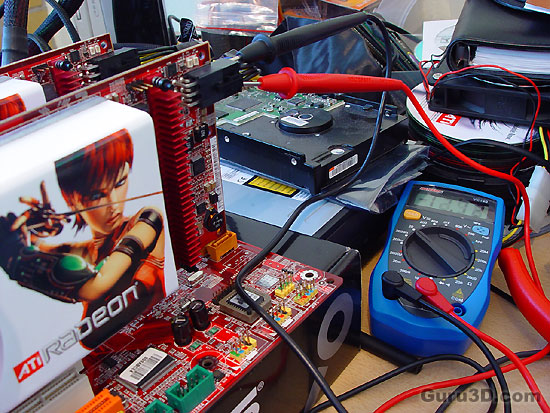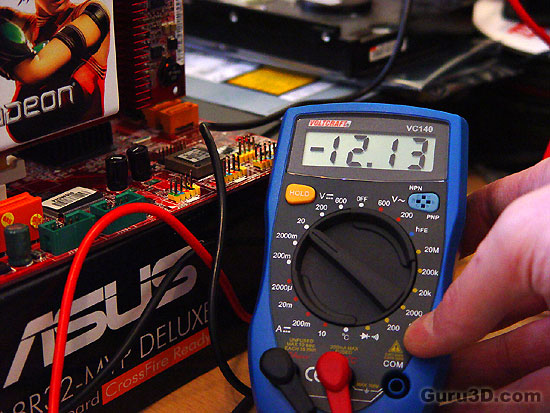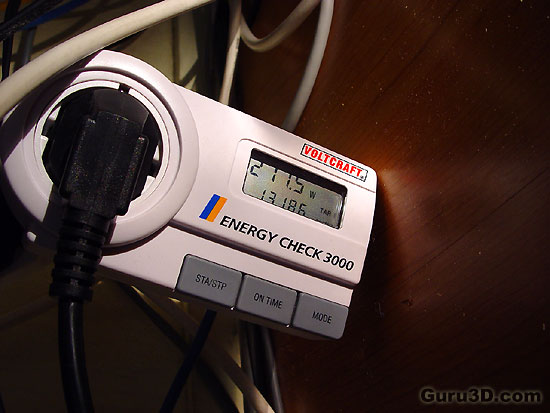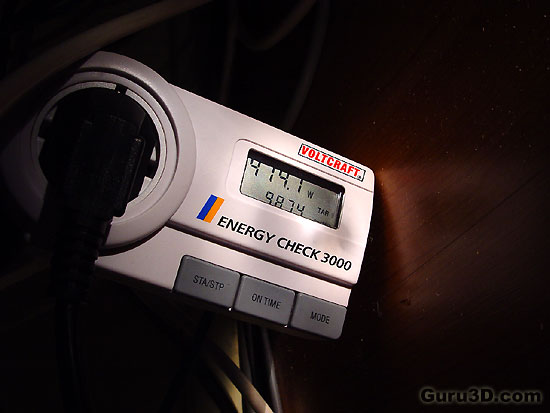Page 4
Power Supply Requirements![]()
First off let me kill a rumor based on speculation. A lot of you are thinking that high-end graphics cards require well over 22 AMPS on the 12 volts rail. Partly correct.
Current high-end graphics cards however will really draw 10 AMPS maximum per card and allow me to prove that:
We know that the Radeon X1900 XT can peak towards 120 Watts:
~120 Watt : 12 Volts = ~10 AMPs
Two of such cards would consume 20A at the highest peak. Why is 22+ AMPS per card recommended ? Because a lot of the PSU's out there will feed these lovely dual-core CPUs/Mainboard/memory/SATA and other peripherals from that 12 volts rail also. The best PSU's have dual or even quad 12 volts rails and thus the number of AMPs on these rails can be much lower.

Yes .. I have been called Inspector Gadget once or twice. You see photo's of the MSI mainboard right there yet for the final results we switched back to the ASUS board.

You'll need a high-end stable power supply, that 12 volts rail is particularly important. With the aforementioned (first) mainboard instability one of the first things we checked was the 12 volts rails for instability.
Overall, judging from the results above, rather okay results really. I do recommend a 500-600 Watts power supply at the very least though with dual 22-25 Amps dedicated PCI-Express graphics 12 volts rails. A Crossfire rig is going to be extremely demanding on power consumption as we are not just talking about the two 100 Watt pulling graphic cards. You need the high-end CPU sucking power also. Stability is important, buy a good PSU !
We tested it with the Enermax Liberty 620 Watts PSU with no less than two 22 Amps 12 volts rails dedicated to the graphics cards. You can read our review on this puppy on this page, it's a really good and highly recommended PSU.

Radeon X1900 XT Crossfire based PC in idle.

Radeon X1900 XT Crossfire based PC when it's peaking.
